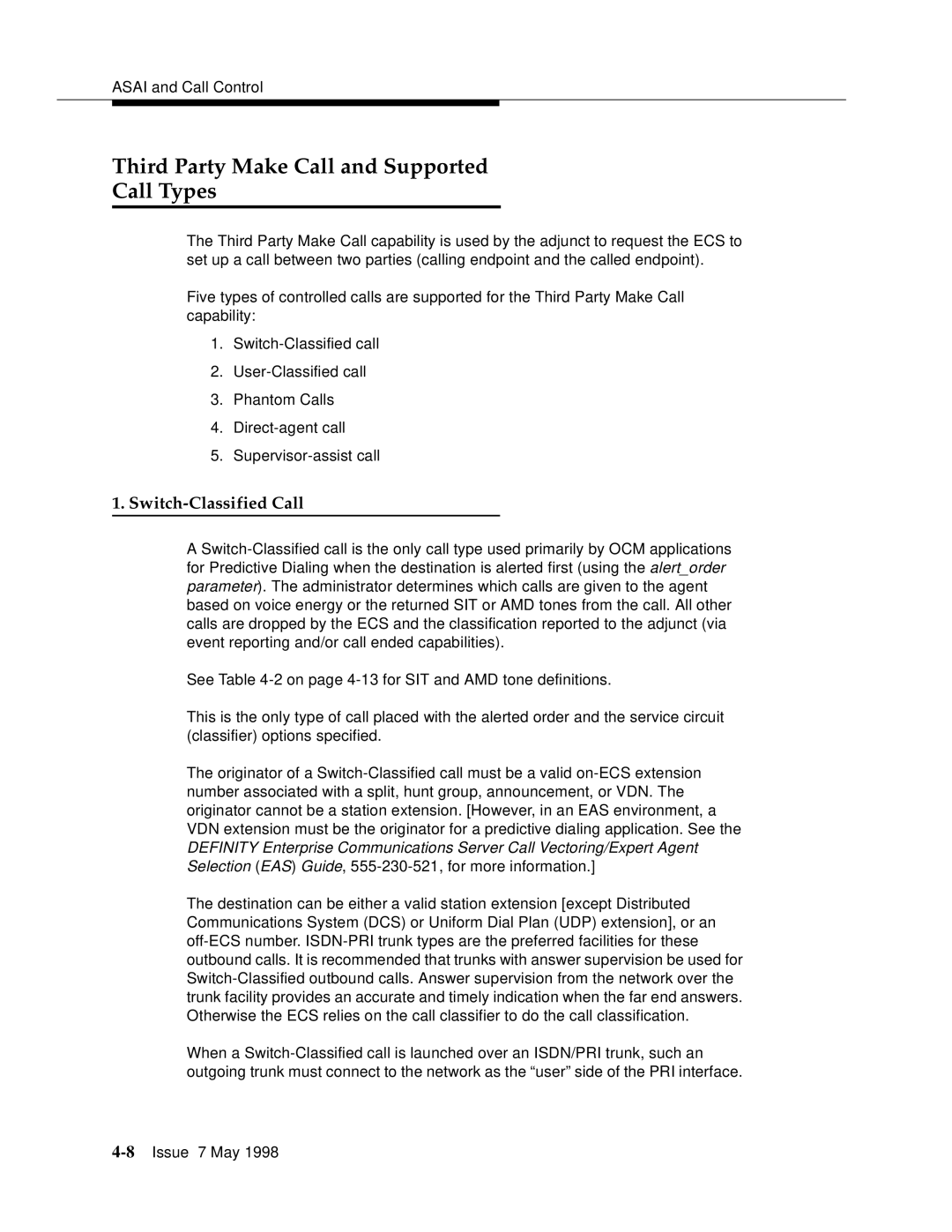
ASAI and Call Control
Third Party Make Call and Supported
Call Types
The Third Party Make Call capability is used by the adjunct to request the ECS to set up a call between two parties (calling endpoint and the called endpoint).
Five types of controlled calls are supported for the Third Party Make Call capability:
1.
2.
3.Phantom Calls
4.
5.
1.Switch-Classified Call
A
See Table
This is the only type of call placed with the alerted order and the service circuit (classifier) options specified.
The originator of a
The destination can be either a valid station extension [except Distributed Communications System (DCS) or Uniform Dial Plan (UDP) extension], or an
When a
